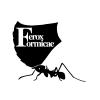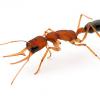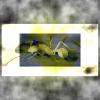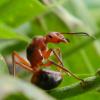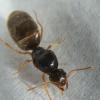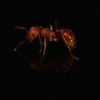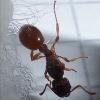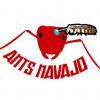- Formiculture.com
- Forums
- Gallery
- Members
- Member Map
- Chat

Books on Ants for laypersons
Started By
Acshaw89
, Jan 30 2020 5:03 PM
15 replies to this topic
#1
 Offline
-
Posted January 30 2020 - 5:03 PM
Offline
-
Posted January 30 2020 - 5:03 PM
Anyone have any suggestions for a good book about ants in general? Preferably with some color photos? Since I’m a beginner I’m looking for something that is well written for laypersons as I won’t be familiar with a lot of scientific jargon.
Sent from my iPhone using Tapatalk
Sent from my iPhone using Tapatalk
- ANTdrew likes this
#2
 Offline
-
Posted January 30 2020 - 5:37 PM
Offline
-
Posted January 30 2020 - 5:37 PM
Ants of North America By Brian L. Fisher is really good. It was my first ever ant book, and I still adore its compact nature and gorgeous visuals, including gorgeous photos of displayed specimens along with a hand drawn key to North American ant genera. It does have a few inaccuracies (mostly with naming), but it still holds up pretty well today.
I don't have this one myself, but I have heard that The Ants by world-renown Myrmecologist Edward O. Wilson is a really good read. It's a little more scientific, but it seems really good for beginners from what I've read.
Peter Slingsby recently sent me a signed copy of his new book, Ants of Southern Africa, and it is just amazing! It's still in it's first stages, and he admits it still has mistakes, but it is certainly amazing, with tons of really unique details. If you have any interest in African ant species, this book is a must read.
This one is a lot more complex, but back in June, James Wetterer sent me Mark Deyrup's Ants of Florida, and let me tell you, I adore this book! Mark Deyrup did absolutely amazing with the plates in this book, and I honestly can't keep my eyes off of them. He draws each ant with meticulous detail and his effort towards this book shows. If you have an interest in the ants of Florida (or southeastern ants in general, as Florida contains many ants that can be found elsewhere in the southeast), I highly recommend this book.
Currently Keeping:
Camponotus chromaiodes, Camponotus nearcticus, Stigmatomma pallipes, Strumigenys brevisetosa, Strumigenys clypeata, Strumigenys louisianae, Strumigenys membranifera, Strumigenys reflexa, Strumigenys rostrata
#3
 Offline
-
Posted January 30 2020 - 6:07 PM
Offline
-
Posted January 30 2020 - 6:07 PM
I just received Adventures among Ants by Mark W. Moffett from a friend. It's a pretty great book so far and not overly scientific. I honestly love it.
- Ferox_Formicae and ANTdrew like this
#4
 Offline
-
Posted January 30 2020 - 7:36 PM
Offline
-
Posted January 30 2020 - 7:36 PM
You could also get the AntsCanada ant e-book, maybe.
For kids the Uncle Milton booklet is actually not bad, though I think it has a few inaccuracies.
Great question though as I was just wondering about this myself, though thinking more of looking for a book for younger kids along the lines of the Uncle Milton booklet.
Formiculture Journals::
Veromessor pergandei, andrei; Novomessor cockerelli
Camponotus fragilis; also separate journal: Camponotus sansabeanus (inactive), vicinus, laevigatus/quercicola
Liometopum occidentale; Prenolepis imparis; Myrmecocystus mexicanus (inactive)
Pogonomyrmex subnitidus and californicus (inactive)
Tetramorium sp.
Termites: Zootermopsis angusticollis
Isopods: A. gestroi, granulatum, kluugi, maculatum, vulgare; C. murina; P. hoffmannseggi, P. haasi, P. ornatus; V. parvus
Spoods: Phidippus sp.
#5
 Offline
-
Posted January 30 2020 - 7:48 PM
Offline
-
Posted January 30 2020 - 7:48 PM
Ants of North America By Brian L. Fisher is really good. It was my first ever ant book, and I still adore its compact nature and gorgeous visuals, including gorgeous photos of displayed specimens along with a hand drawn key to North American ant genera. It does have a few inaccuracies (mostly with naming), but it still holds up pretty well today.
I don't have this one myself, but I have heard that The Ants by world-renown Myrmecologist Edward O. Wilson is a really good read. It's a little more scientific, but it seems really good for beginners from what I've read.
Peter Slingsby recently sent me a signed copy of his new book, Ants of Southern Africa, and it is just amazing! It's still in it's first stages, and he admits it still has mistakes, but it is certainly amazing, with tons of really unique details. If you have any interest in African ant species, this book is a must read.
This one is a lot more complex, but back in June, James Wetterer sent me Mark Deyrup's Ants of Florida, and let me tell you, I adore this book! Mark Deyrup did absolutely amazing with the plates in this book, and I honestly can't keep my eyes off of them. He draws each ant with meticulous detail and his effort towards this book shows. If you have an interest in the ants of Florida (or southeastern ants in general, as Florida contains many ants that can be found elsewhere in the southeast), I highly recommend this book.
Peter needs to make a full book. Africa has some really varied diversity.
Not to mention the country is understudied with major information blanks.
- Ferox_Formicae likes this
#6
 Offline
-
Posted January 31 2020 - 8:44 AM
Offline
-
Posted January 31 2020 - 8:44 AM
The Ants is a very good book, excellent for getting to know how to distinguish genera, and some good vocabulary to know relating to the study of ants.
Hi there! I went on a 6 month or so hiatus, in part due, and in part cause of the death of my colonies.
However, I went back to the Sierras, and restarted my collection, which is now as follows:
Aphaenogaster uinta, Camponotus vicinus, Camponotus modoc, Formica cf. aserva, Formica cf. micropthalma, Formica cf. manni, Formica subpolita, Formica cf. subaenescens, Lasius americanus, Manica invidia, Pogonomyrmex salinus, Pogonomyrmex sp. 1, Solenopsis validiuscula, & Solenopsis sp. 3 (new Sierra variant).
#7
 Offline
-
Posted January 31 2020 - 8:46 AM
Offline
-
Posted January 31 2020 - 8:46 AM
The Ants is a very good book, excellent for getting to know how to distinguish genera, and some good vocabulary to know relating to the study of ants.
Thanks I was wondering about this one in particular but it’s quite expensive. Are there a lot of photos?
Sent from my iPhone using Tapatalk
#8
 Offline
-
Posted January 31 2020 - 12:23 PM
Offline
-
Posted January 31 2020 - 12:23 PM
Just a tip, you can read The Ants for free on antwiki.com. They got permission from the authors. No pictures in that version, though.
- Ferox_Formicae likes this
#9
 Offline
-
Posted January 31 2020 - 3:18 PM
Offline
-
Posted January 31 2020 - 3:18 PM
I started a thread about this last fall: https://www.formicul...s/?fromsearch=1
"The ants are a people not strong, yet they prepare their meat in the summer." Prov. 30:25
Keep ordinary ants in extraordinary ways.
Keep ordinary ants in extraordinary ways.
#10
 Offline
-
Posted January 31 2020 - 5:14 PM
Offline
-
Posted January 31 2020 - 5:14 PM
I went and bought a used copy of The Ants on Amazon... thanks for the recommendations! ![]()
Formiculture Journals::
Veromessor pergandei, andrei; Novomessor cockerelli
Camponotus fragilis; also separate journal: Camponotus sansabeanus (inactive), vicinus, laevigatus/quercicola
Liometopum occidentale; Prenolepis imparis; Myrmecocystus mexicanus (inactive)
Pogonomyrmex subnitidus and californicus (inactive)
Tetramorium sp.
Termites: Zootermopsis angusticollis
Isopods: A. gestroi, granulatum, kluugi, maculatum, vulgare; C. murina; P. hoffmannseggi, P. haasi, P. ornatus; V. parvus
Spoods: Phidippus sp.
#11
 Offline
-
Posted January 31 2020 - 5:29 PM
Offline
-
Posted January 31 2020 - 5:29 PM
Ants of North America By Brian L. Fisher is really good. It was my first ever ant book, and I still adore its compact nature and gorgeous visuals, including gorgeous photos of displayed specimens along with a hand drawn key to North American ant genera. It does have a few inaccuracies (mostly with naming), but it still holds up pretty well today.
I don't have this one myself, but I have heard that The Ants by world-renown Myrmecologist Edward O. Wilson is a really good read. It's a little more scientific, but it seems really good for beginners from what I've read.
Curious about the inaccuracies you observed.
#12
 Offline
-
Posted January 31 2020 - 6:20 PM
Offline
-
Posted January 31 2020 - 6:20 PM
"Journey to the ants" by Hölldobler and Wilson.
Basically a thinner and cheaper version of "the ants".
- ANTdrew likes this
#13
 Offline
-
Posted January 31 2020 - 9:17 PM
Offline
-
Posted January 31 2020 - 9:17 PM
I compiled my books in a list, I hope to include some pics and reviews down the road: https://www.formicul...oogs-ant-books/
I need to check out some of these other book suggestions, awesome!
My Youtube channel: Ants Navajo Keeping- Camponotus pennsylvanicus, Tapinoma sessile x 2, Pheidole sp x 2
"We may be witnesses to a Biblical prophecy come true - 'And there shall be destruction and darkness come upon creation and the beasts shall reign over the earth.'" - Dr. Harold Medford
#14
 Offline
-
Posted February 1 2020 - 9:56 AM
Offline
-
Posted February 1 2020 - 9:56 AM
Ants of North America By Brian L. Fisher is really good. It was my first ever ant book, and I still adore its compact nature and gorgeous visuals, including gorgeous photos of displayed specimens along with a hand drawn key to North American ant genera. It does have a few inaccuracies (mostly with naming), but it still holds up pretty well today.
I don't have this one myself, but I have heard that The Ants by world-renown Myrmecologist Edward O. Wilson is a really good read. It's a little more scientific, but it seems really good for beginners from what I've read.
Curious about the inaccuracies you observed.
It's mostly just about the names. For instance, Strumigenys is broken into Strumigenys and Pyramica, Temnothorax americanus is still Promognathus americanus, Colobopsis is still considered a subgenus of Camponotus, Dorylinae is still broken into Ecitoninae and Cerapachinae, and Stigmatomma and Fulakora are still in Amblyopone, just to name a few. Other than that, most aspects of the book are accurate. Also, just a thing about Ants of Florida, which has a few inaccuracies too, Mark Deyrup placed Gnamptogenys triangularis in with the Ponerines. I don't believe Gnamptogenys were ever grouped in with Ponerines, at least recently. Just a little thing though.
Currently Keeping:
Camponotus chromaiodes, Camponotus nearcticus, Stigmatomma pallipes, Strumigenys brevisetosa, Strumigenys clypeata, Strumigenys louisianae, Strumigenys membranifera, Strumigenys reflexa, Strumigenys rostrata
#15
 Offline
-
Posted February 1 2020 - 12:37 PM
Offline
-
Posted February 1 2020 - 12:37 PM
Ahh, I thought it was something important.
#16
 Offline
-
Posted February 1 2020 - 1:44 PM
Offline
-
Posted February 1 2020 - 1:44 PM
Ahh, I thought it was something important.
Not really, no. It's still an absolutely incredible book.
Currently Keeping:
Camponotus chromaiodes, Camponotus nearcticus, Stigmatomma pallipes, Strumigenys brevisetosa, Strumigenys clypeata, Strumigenys louisianae, Strumigenys membranifera, Strumigenys reflexa, Strumigenys rostrata
1 user(s) are reading this topic
0 members, 1 guests, 0 anonymous users




